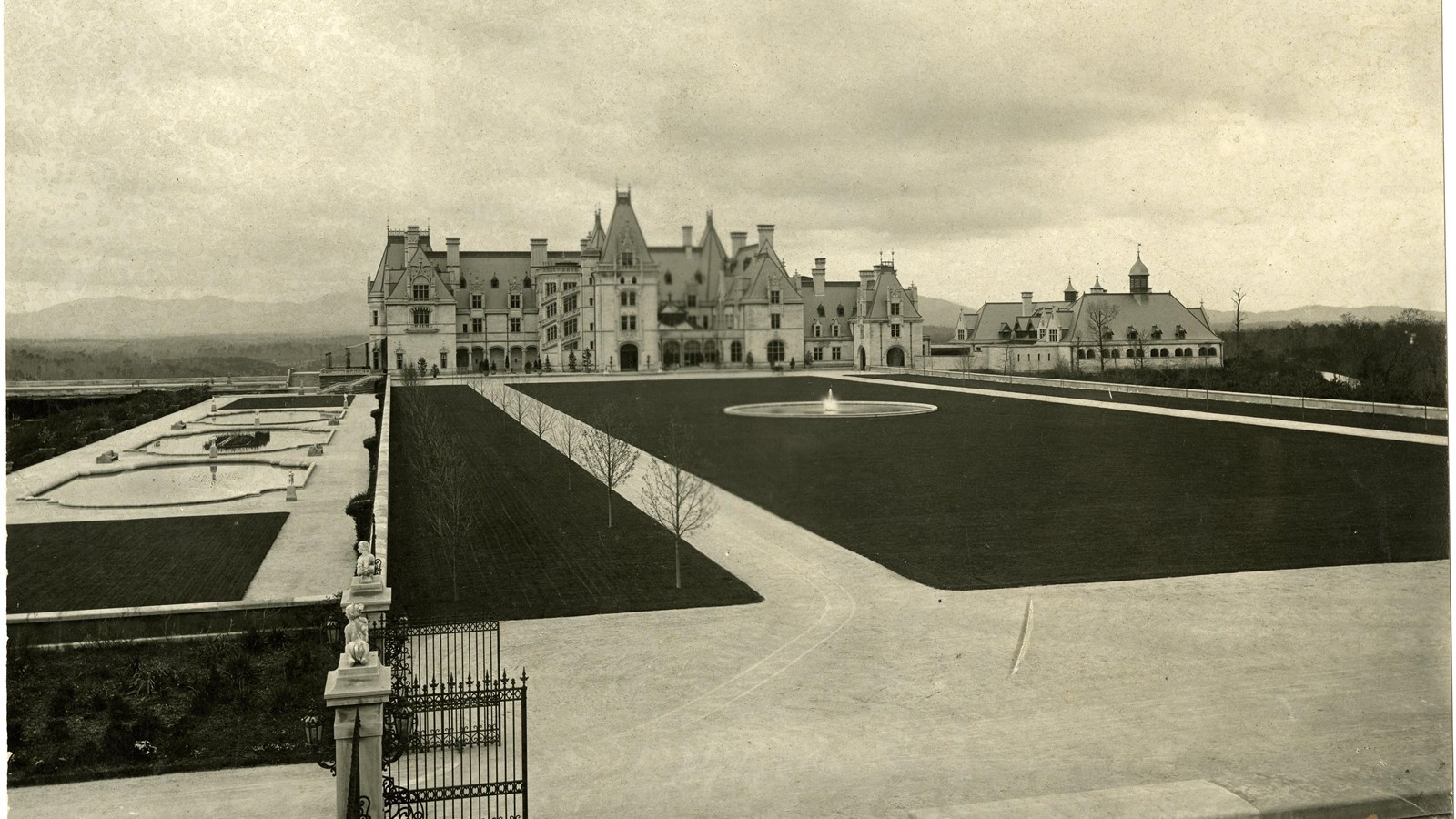Last updated: May 24, 2024
Place
Biltmore Estate

Olmsted Archives, Job #00170, Asheville, NC
Frederick Law Olmsted knew George’s father, William Henry Vanderbilt, when they both lived on Staten Island. Olmsted had already done several projects for the Vanderbilt family when George approached him in 1888, asking for advice on the 120,000 acres of North Carolina property he’d just purchased.
At the age of 66, Olmsted made his first journey to Asheville to visit George Vanderbilt, then 25 and the recent inheritor of $13 million (around $350 million in 2020). Unlike many projects Olmsted had worked on, Vanderbilt had the money to carry out his designs, and he knew exactly what he wanted: an English manor style estate.
“The soil seems to be generally poor. The woods are miserable, all the good trees having again and again been culled out and only the runts left. The topography is most unsuitable for anything that can properly be called park scenery. My advice would be to make a small park in which you look from your house, make a small pleasure ground and gardens; farm your river bottoms chiefly and…keep and fatten livestock with a view to manure and…make the rest a forest”
-Frederick Law Olmsted in his letter of recommendation to George Washington Vanderbilt
Olmsted was able to convince Vanderbilt that the land would be better suited with a grand garden area close to the house and turn the remaining acres into a forest, providing the home with spectacular views.
In Olmsted’s final project, he built a nine-mile arboretum that went from the house, to the French Broad River, and back up to the house again. He also planned the entry way to the Biltmore as a pleasure drive, passing through a “natural forest”. That natural forest contained clusters of trees that purposely blocked the view so that visitors would be shocked when the curtain of the forest was pulled back and you could finally see the house.
Despite ill health and the pressure of the Chicago World’s Fair, Olmsted traveled by rail several times to Asheville, ensuring his designs were being followed. He felt the transitions between formal and natural gardens were important to differentiate, as was the use of native plants, and a balance of small trees and large shrubs.
Following Olmsted’s suggestions, Vanderbilt hired trained forester Gifford Pinchot to develop a management plan for his land. Together with Olmsted, they founded America’s first large scale managed forest, and the cradle of U.S. forestry.
Source: "Bitlmore," The Cultural Landscape Foundation
For more information and primary resources, please visit:
Olmsted Research Guide Online
Olmsted Archives on Flickr
Olmsted Network
